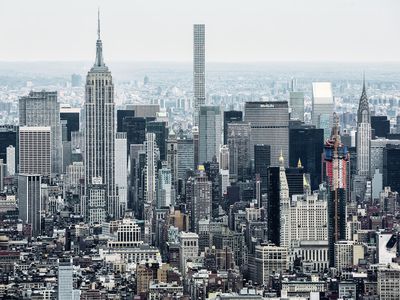
As an influential zoning measure turns 100, take a look at the buildings it helped create
It was a century ago today that the New York City 1916 Zoning Resolution was adopted, forever altering the shape of Manhattan's skyline. The measure was intended to curb the effect of multiple skyscrapers sprouting up all over the city. Before the resolution was enacted, buildings could rise as high as the technology allowed—leading to tall towers that would block out sunlight and create dark caverns on city streets. The Equitable Building on Broadway, built in 1915, is perhaps the best-known example of this; thanks to its height (nearly 600 feet) and its footprint, it feels downright fortress-like.
The 1916 Zoning Resolution changed that by demanding that architects create setbacks on buildings at certain points, leading to skyscrapers that were still tall, but felt less bulky. The Chrysler Building is one stellar example—it rises more than 1,000 feet, but thanks to its slender tower (which gets progressively more narrow as it rises), it doesn't feel overwhelming.
The zoning change would go on to influence the architecture of buildings—and indeed, the look Manhattan's skyline—until the mid-20th-century, when a new measure was put into place to account for modern architectural styles. But on the centennial of the 1916 resolution, we're looking at some of the iconic NYC buildings that came about as a result. Did we miss your favorite? Let us know in the comments.
from
http://ny.curbed.com/maps/nyc-zoning-resolution-anniversary-skyscrapers
No comments:
Post a Comment